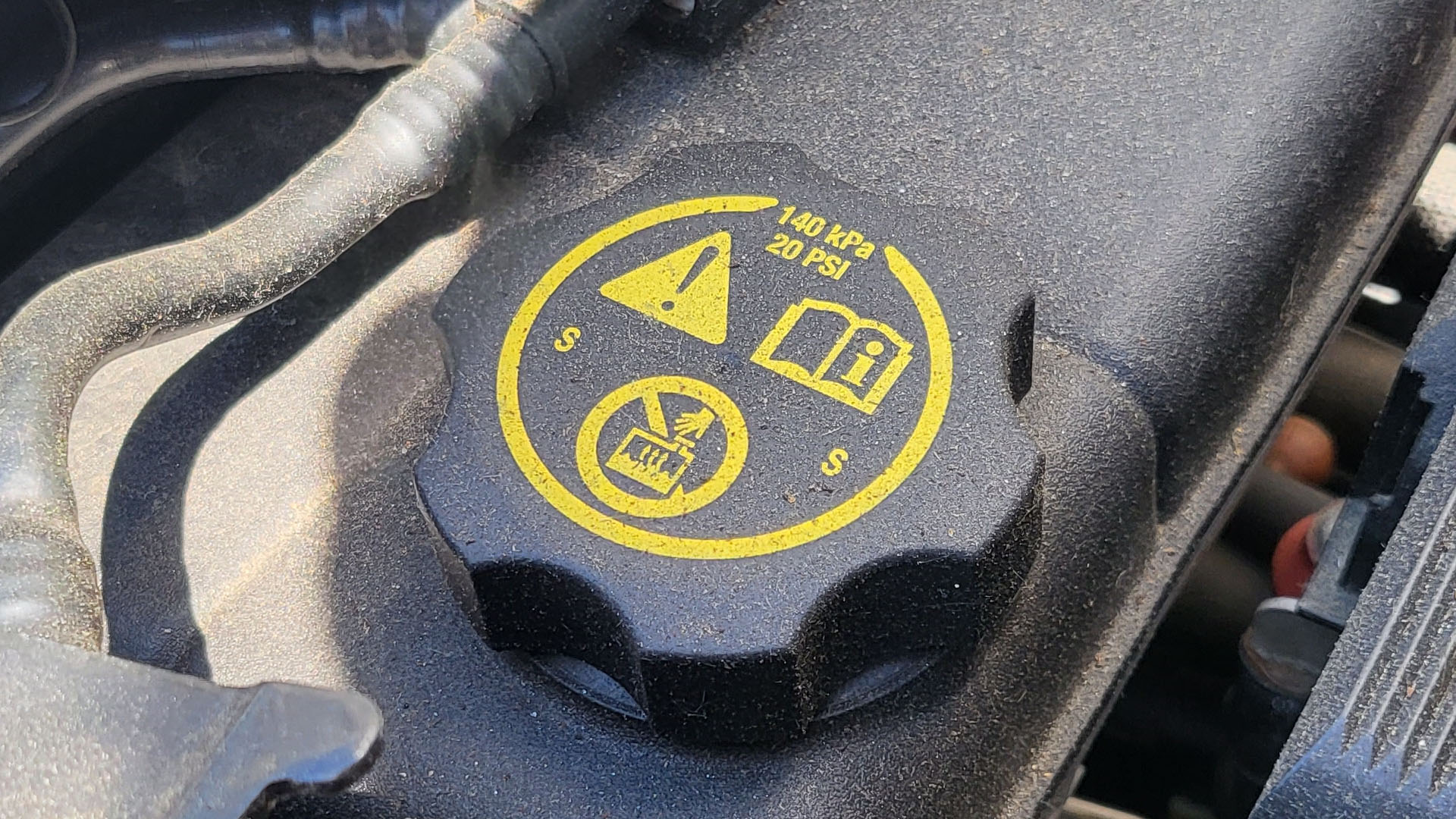

We may earn revenue from the products available on this page and participate in affiliate programs. Learn more ›
Checking your coolant level could be the difference between a blown engine and a safe journey. Especially if you live in a hot climate or tow on a regular basis, checking how much coolant you have is important to keep your car running right.
Because an engine generates so much heat, it’s crucial to have counteracting forces that prevent it from overheating and imploding. That’s why every car requires a cooling system to keep it in check, and why having enough water, antifreeze, or a mix of both is extremely important.
Checking your coolant level should take you less than 10 minutes, assuming your car’s engine isn’t warm. Think of it like checking the oil on a dipstick, except there is no dipstick and if you do it while the engine is still hot, you’re likely going to get seriously burned. For that reason, it’s important to make sure your car is completely cooled off before checking the coolant level.
If your car doesn’t need any coolant after you check it, no tools are required to complete this short job. If it does, you’re going to need the right coolant, typically a 50-50 mix of water and antifreeze, and maybe a funnel to make pouring coolant into the radiator easier. Always check with your manufacturer’s literature to make sure you’re using the right coolant. Using an improper coolant could damage an engine.
Step 1: Ensure Your Engine Is Cold
Checking your coolant level is not safe to do unless the engine is cold. Most vehicles’ cooling systems operate under pressure and run at temperatures above the boiling point of water. If you open the radiator cap to check the coolant while the car is still warm, a surge of boiling liquid will rush out of the cap right where your hand is, which can cause severe burns. You can ensure your engine is cold by letting the car sit for several hours after it last ran, or even overnight if you want to be extra cautious.

Step 2: Pop The Hood And Locate The Radiator Cap
Open your car’s hood. Almost all cars have their radiators located under the hood. Once the hood is opened, look to the front of the engine bay to spot the radiator. On top of the radiator will almost always be the radiator cap. This is what we will be opening. Some cars may have a front-mounted radiator but a remote fill location. Refer to the official manufacturer’s literature or trusted sources to find the location of the cap.

Step 3: Twist The Radiator Cap Open
After locating the cap and ensuring the car is cold, twist open the radiator cap. Put it somewhere safe, where it won’t fall down into the engine bay. Make sure you don’t drop anything into the cooling system either.

Step 4: Look For Liquid
A vehicle’s cooling system should be full of water or coolant, so you should be able to see it when you twist open the cap. It’s usually green, orange, or another vibrant color. If you live in a very warm climate, it may just be regular water.
If you can’t see coolant, try shining a light into the open radiator to catch a shimmer of liquid. If you see liquid, the car probably has enough coolant. If you can’t see liquid, you may need to add some. Otherwise, secure the radiator cap back down tightly and you’re done! You have checked your car’s coolant level.

Final Tips
Checking your coolant level isn’t a vital thing to do all of the time, but if it’s especially hot out or if you have noticed your car leaking coolant, it’s a good thing to try. Many cars have coolant level sensors that will alert you if your car is low on coolant. Independent of a warning light, if you notice your car’s engine temperature is running consistently high, you might want to check your coolant level.
Video
